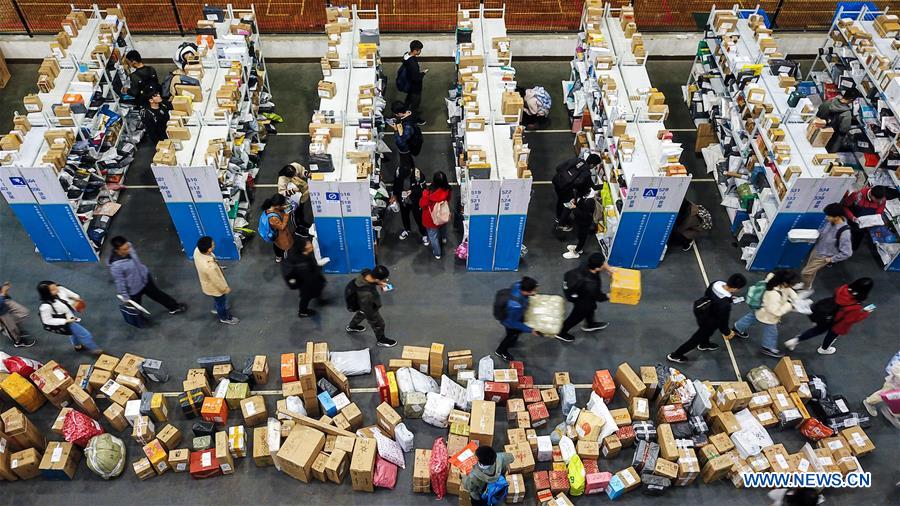China's Singles' Day sales on TMall hit 268.4 billion yuan ($38.3 billion), exceeding last year's record haul by 26 percent.

(File photo: Xinhua)
Since China's e-commerce giant Alibaba launched its first annual shopping promotion event on November 11, 2009, the day has transformed from a celebration for Chinese bachelors and bachelorettes to the world's largest online shopping bonanza. As Bloomberg observes, more merchandise is sold online over the 24-hour period than during the five-day US holiday buying spree that begins on Thanksgiving and ends on Cyber Monday.
As the months-long US-China trade war drags on and China's economic growth slows down, the "eye-popping" (Forbes) gross merchandise volume numbers (GMV) demonstrate that consumption remains a robust driver for China’s economy.
Amidst a roiling global business environment, Alibaba is confident to keep profitable thanks to healthy online consumption in China. "The digital consumption among Chinese consumers is still very high," EY Greater China digital advisory leader Benson Ng told the South China Morning Post.
What can be learned from China's flourishing e-commerce sector about the resilience of China’s economy?
The Chinese market exhibits great potential as smaller cities become a new growth pole. According to the Cost-Effective Economy white paper released by Alibaba this March, the overall speed of consumption growth in third and fourth tier cities is two to seven times of that in first and second tier cities. JD Big Data Research Institute reveals that the number of consumers from third and fourth tier cities has increased by 104 percent, with 72 percent of new customers from the expanding market.
Online commerce has become increasingly important in cross-border trade. From November 2018 till now, the trading volume of imported goods on TMall has increased by 89.7 percent. Triple the number of overseas brands have entered the online cross-border trade platform since that time than the previous year. Thanks to the 2nd China International Import Expo (CIIE), 113 international brands have reached the Chinese market online for the first time.
Consumption on social media platforms has become a new driver for e-commerce growth. Real-time data show that within 9 hours, deals worth more than 10 billion yuan ($1.4 billion) were sealed on Taobao. Big data has enabled retailers to satisfy the demands of social media users in a more tailored manner, tapping the potential of the ever-enlarging Chinese market.
Growth is bolstered by China’s edge in logistics and distribution. Despite the large volume of purchased goods, express-couriers guarantee one-day or even one-hour delivery to customers due to continuous efforts in expanding network coverage and warehouse capacity. Leading retailers also shoulder social responsibility. Alibaba announced its plan of "a greener 11.11," committing to setting up more than 40,000 recycling stations across China.
As the Chinese market shows its robustness amid the ongoing trade war, choices of consumers are influenced by the ongoing trade conflict. A recent survey by American consulting firm AlixPartners revealed that 70 percent of respondents believe the trade war will impact their overall purchasing, while more than half of them cited national loyalty as the main reason for not buying American brands. Another survey by London-based Brunswick Group suggested 56 percent of Chinese consumers say they have avoided purchasing an American product to show support for their country. Consumers from both countries emphasize that addressing bilateral trade is a priority for their countries, the survey noted.
US President Donald Trump boasted on Monday that the supply chain in China is "all broken, like an egg" due to tariffs, according to a report from The Washington Times. As the figures indicate, however, China's economy is still on the path to a prosperous future.
(Compiled by Bai Shenhao)


